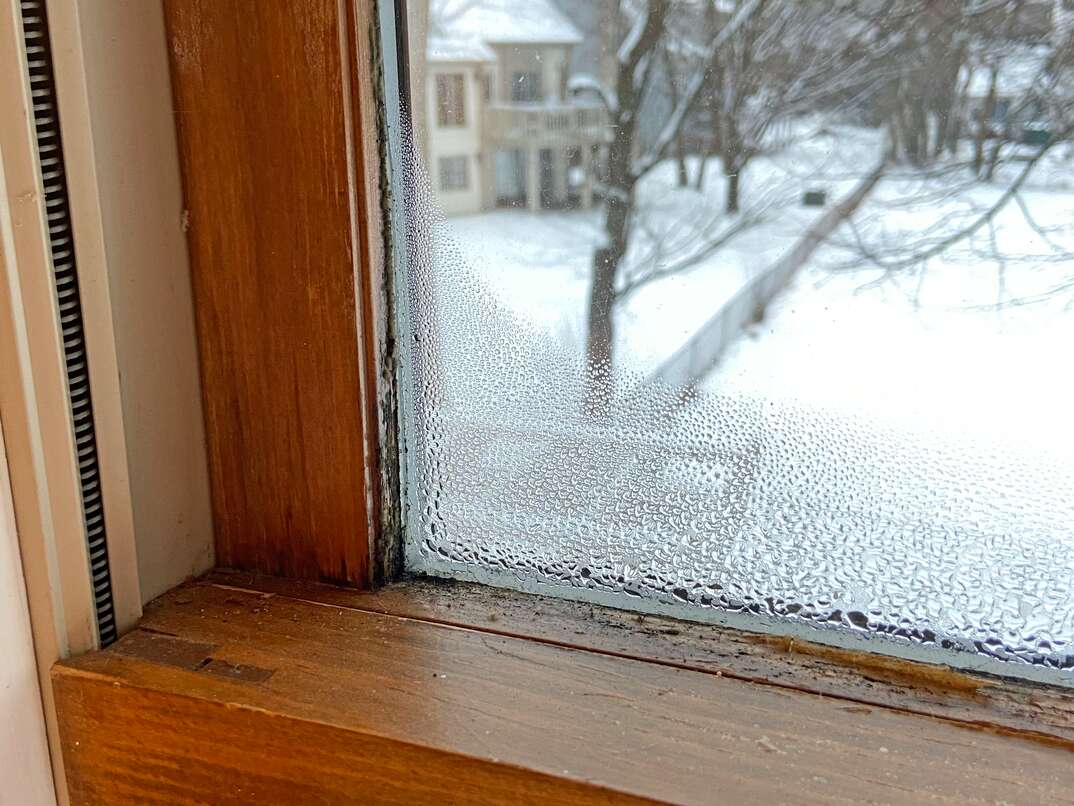- AppliancesElectriciansHVACLandscapingLocksmithPest ControlPlumbingRenovationRoofingT V RepairAll Home Improvement
- Car AccidentClass ActionCorporate LawCriminal DefenseDivorce LawEmployment LawFamily LawFinancial LawLegal AidMedical Injury LawyersMedical MalpracticeReal Estate LawWater Fire RestorationAll Legal
- InvestmentRetirementAll Finance
- Animal InsuranceAutoGeneral InsuranceHealth PolicyHome RentersAll Insurance
- DentalHealth SpecialistsAll Medical
- Animal CareVeterinaryAll Pets
- Auto GlassTowingAll Automotive
Why Do My Windows Fog Up (and How Do I Fix It)?

Foggy windows in your house aren’t something you should ignore. If your windows are fogging, you most likely have a related energy issue that should be addressed. The first step in fixing foggy windows, though, is to identify the source of the excess moisture.
Read More Home Improvement Articles
Two main reasons your windows might be fogging up are indoor moisture or that the window’s seal is broken. We’ll look at both causes and what you can do to fix your foggy windows.
Broken Window Seals
If only one window in your home gets foggy, it’s most likely because of a broken window seal. If your window seal breaks, moisture can form between the panes. This is what produces that cloudy, foggy look. Broken seals most often occur with older windows but may also happen if the seal has been exposed to heavy rain or high heat.
Have you had a heavy rainstorm? Seals may become damaged if there’s a significant water buildup near your windows. What about too much heat? Warm air expands, so the air inside a double-pane window could strain the seals. The seals could deteriorate over time if your windows are constantly exposed to direct sunlight. That being said, a string of hot summer days, alone, probably won’t damage the window seals.
The most common cause of foggy windows, though, is old age. The longer the window has been in place, the more wear and tear it has suffered. The seal has had to cope with years of the window opening and closing. Harsh temperatures in both summer and winter also contribute to seal damage. You may notice fog forming as the weather cools, thanks to the warm indoor air clashing with the cold glass panel. For a temporary fix, you can try defogging spray. However, this won’t solve the root problem: a broken seal leading to poor window insulation. The best way to fix your foggy windows is simply to invest in new, energy-efficient ones.
Fixing broken window seals will prevent more severe problems like water damage, mold growth or floor stains, not to mention improving your home's energy efficiency.
Indoor Humidity
If more than one of your windows is fogging, the cause is more likely to be your home’s humidity levels. Condensation forms when warm, humid air hits a cold surface. Think of the cozy temperature of your home contrasting with an icy cold window. If your windows primarily fog when the temperatures outside drop, indoor humidity is most likely to blame.
So what to do? The easiest step is to use a dehumidifier. This will remove moisture from the air and prevent condensation on your windows. You can also turn on a fan. Circulating warm air won’t have the opportunity to cling to your cold window. Window film kits are another option. You apply the film to your windows, and this film prevents the warm indoor air from touching the cold glass window panes.
Remember, though: One-off events like cooking or steam from a shower, can also temporarily cause windows to fog. Another surprising but easily fixable cause of window fogging is too many plants. If you have a lot of plants in one room and the windows are fogging, try spreading them around different rooms in your home, instead.
More Related Articles:
- How Much Does a Home Inspection Cost?
- 4 Tips for Hiring a General Contractor for Your Next Remodeling Project
- Should You Hire a Contractor or a Handyman?
- 5 Things to Look For When You're Hiring an Electrician
- What to Look for When Hiring an Exterminator
Stay Fog-Free
Keep the following tips in mind to ensure your windows stay clean and shiny for as long as possible.
Buy a new window or two. Buying new energy-efficient windows might seem like a big expense, but remember that this will also help reduce your home’s heating and cooling costs. When buying new windows, look for a manufacturer that offers a lifetime guarantee. And make sure they’re installed correctly by a professional. Windows that are not properly installed could result in seal failures.
Inspect the seals every few months. Examine your windows, the sash and the seals for any signs of damage or deterioration. Contact the manufacturer for advice if you think the seals might be worn out.
Finally, be sure to regulate your home’s indoor temperature. Run fans year-round to keep the house ventilated. If you have high humidity levels, use a dehumidifier. If you’re unsure how humid your home is, use a hygrometer. This device measures a room’s humidity and temperature. If there’s a lot of moisture in the air, a dehumidifier will prevent warm air from seeping between the window panes.
Even if you don’t have a problem with foggy windows now, knowing what to be aware of and the simple maintenance steps you need to take will keep your home’s energy costs down and prevent mold, water stains and other potential damage.
Elocal Editorial Content is for educational and entertainment purposes only. Editorial Content should not be used as a substitute for advice from a licensed professional in your state reviewing your issue. Systems, equipment, issues and circumstances vary. Follow the manufacturer's safety precautions. The opinions, beliefs and viewpoints expressed by the eLocal Editorial Team and other third-party content providers do not necessarily reflect the opinions, beliefs and viewpoints of eLocal or its affiliate companies. Use of the Blog is subject to the
Website Terms and Conditions.The eLocal Editorial Team operates independently of eLocal USA's marketing and sales decisions.



